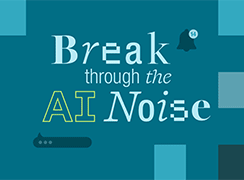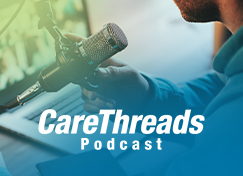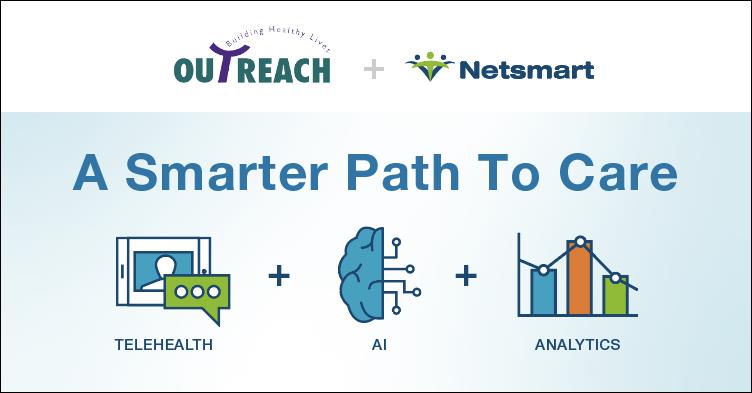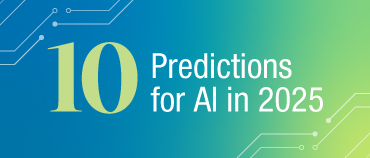AI is officially mainstream; the driving force behind healthcare innovation. According to a report from the American Hospital Association, more than 60% of healthcare organizations in the U.S. have already adopted AI-driven solutions, with that number expected to grow significantly by the end of 2025. From improving care coordination to easing administrative burdens, AI is shaping the future of human services and post-acute care in ways we couldn’t have imagined just a few years ago.
As leaders in AI and automation for healthcare, we’ve compiled 10 key predictions to expect throughout 2025 and beyond that will redefine how organizations operate, serve clients and manage resources.
Let’s dive in.
1. Enhanced Care Coordination with Predictive Analytics
AI-driven predictive analytics will transform care coordination by identifying at-risk populations more effectively than ever before. In human services and post-acute care, timely interventions can be lifesaving. AI will enable care teams to anticipate crises, prevent hospitalizations and ensure that individuals receive the right support at the right time.
By leveraging AI-driven risk models, organizations can shift from reactive care to proactive, personalized interventions—reducing costs while improving outcomes.
2. AI-Driven Workforce Training and Burnout Prevention
Workforce retention remains a top challenge in human services and post-acute care. AI will help organizations offer real-time, adaptive training tailored to employees’ needs and experience levels. These intelligent learning systems will also track workforce trends, identifying signs of burnout and recommending interventions before turnover becomes an issue.
By investing in AI-driven workforce development, organizations can improve staff morale, retention and overall job satisfaction.
3. Data-Driven Decision-Making for Value-Based Care
As healthcare moves toward value-based care models, AI will be essential in tracking outcomes, analyzing cost-effectiveness and informing leadership decisions. Real-time dashboards powered by AI will give organizations a clearer picture of operational efficiencies, patient trends and financial health.
These insights will help organizations optimize resources, reduce unnecessary costs and ensure quality care remains the priority.
4. AI Streamlining Workflows and Revenue Cycle Management
AI will become embedded in everyday workflows, optimizing processes from hiring and onboarding to crisis management and revenue cycle management (RCM). Imagine AI-powered automation routing referrals to the right provider instantly or streamlining billing processes to improve cash flow.
Organizations that embrace AI-driven automation will see fewer administrative headaches, faster processing times and improved financial stability.
5. Increased Regulation Will Shape AI’s Role in Healthcare
AI’s rapid evolution has rightfully caught the attention of policymakers. The “move fast and break things” mantra of Silicon Valley doesn’t align well with human services or post-acute care, where the stakes are high and lives are on the line. This year, expect federal and state regulators—along with agencies like HHS, Medicare and Medicaid—to sharpen guidelines around AI use in healthcare to closer align with what benefits consumers’ needs, safety and privacy.
Organizations will need to be proactive, engaging with industry associations and policymakers to ensure regulation fosters innovation rather than stifling it. AI in healthcare must be safe, ethical and effective—balancing compliance with continued technological advancement.
6. The AI Model Race: Innovation, Consolidation and Commoditization
Investment in large language models (LLMs) like GPT, Claude, DeepSeek and others is skyrocketing. As AI models become more powerful, we’ll see increased competition leading to consolidation and commoditization. Just as Moore’s Law, Metcalfe’s Law and Gilder’s Law have driven computing costs down over time, AI-powered solutions will become more affordable and widely available.
This means organizations will have more options, but they must also be discerning in selecting AI partners that align with their needs, values and regulatory requirements.
7. Personalized and Automated Client Engagement
AI-powered chatbots and virtual assistants will play a bigger role in client engagement. These tools can provide 24/7 support, send automated reminders between appointments and offer behavioral insights to improve treatment adherence. With AI analyzing patient data in real time, engagement strategies can be fine-tuned for better outcomes.
More organizations will integrate AI into client interactions, improving satisfaction and ensuring that no one falls through the cracks due to missed follow-ups or gaps in communication.
8. Unexpected Disruptions in AI Adoption
Most people assumed AI would primarily impact manual labor and blue-collar jobs. Instead, we’re seeing AI disrupt creative and administrative roles at a faster pace.
By late 2025, expect AI to revolutionize processes you wouldn’t have thought possible—fully automating client check-ins or transforming intake procedures. The scope of AI’s impact will extend beyond current expectations, reshaping how organizations operate at every level.
9. AI Extending Lifespans and Predicting Health Risks
AI will play a growing role in longevity and predictive health. Wearable technology and smart devices will analyze real-time health data, potentially identifying early signs of deteriorating health.
Imagine a walking cane that predicts a potential fall based on the angle or amount of pressure a person applies. Or an AI model that detect crisis risk factors before an incident occurs. These innovations will enable earlier interventions, attentive monitoring and may save lives.
10. De-Stigmatization and the Mainstreaming of AI
Public perception of AI is shifting. While some still fear “robots taking over,” AI’s growing presence in everyday life is making it more accepted—just as therapy went from taboo to mainstream over the past decade.
It’s early 2025 and AI is already viewed as an essential tool rather than a novelty or boogeyman. Not using AI in healthcare could become as rare as not using a smartphone in 2015. Organizations that delay AI adoption risk falling behind as the industry moves forward.
We’re Living in the AI-Powered Future
AI’s presence isn’t coming over the horizon—it’s here, impacting nearly every facet of how healthcare operates. In 2025, human services and post-acute care organizations that embrace AI can expect to see better care coordination, improved financial stability and more engaged workforces. And that’s just the beginning.
Regulations will evolve, technology will become more accessible and unexpected innovations will emerge. The key to success will be leveraging AI responsibly, ensuring that it enhances—not replaces—the human element of care. It’s clear we’re stepping into a new era of limitless potential for improving healthcare operations and outcomes well into the future.









